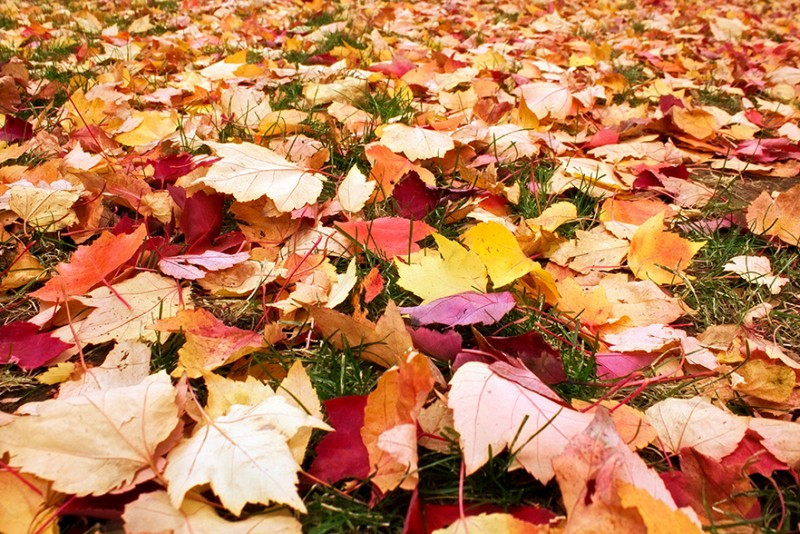You made it through spring and survived spring's seasonal allergies, and now you have (supposedly) enjoyed a nice summer that is winding down. It's mid-August, with many kids heading back to school (or already there in some states), temperatures at night starting to cool somewhat, and much of America ready for fall, foliage, and football – which means good times are ahead and we can breathe in the crisp, autumn air without a worry in the world. Not so fast. Round Two of the seasonal-allergies wars for 2018 is about to hit many of us, and now is the time to prepare. In fact, many of us might already be feeling the effects of allergy symptoms such as runny nose, watery eyes, sneezing, coughing, itchy eyes and nose, and dark circles under the eyes, per webmd.com. Where spring allergies tend toward the sneezing, itching, and watery eyes listed above, fall allergies entail a bit of a shift, with coughing becoming predominant for many allergy sufferers, continuing well into the fall in many cases, perhaps even into November. It might be only mid-August right now, but chances are the symptoms are already starting to hit their targets.
Fall Allergy Causes
Even though some of the symptoms remain the same in going from spring to fall allergies, the sources show some variance from one season to the other. Following is a summary of the most common fall-allergen triggers:- Ragweed. Ragweed season begins in August and stretches into November in some parts of the country, flourishing in areas where the days are warm and the nights are cool – which sounds like a dream for vacationers as well. Vacationing humans that is. Ragweed pollen is usually most abundant in the morning, on windy days, and immediately following a rainstorm. Here's a scary thought; a single ragweed plant can crank out up to 1 billion grains of pollen per season. Other types of weed pollens include sagebrush, pigweed, tumbleweed, cocklebur, and Lamb's-quarters.
- Mold/mildew. These are fungi that thrive both indoors and outdoors, produced by spores blown around by outdoor breezes and circulating indoor air. They grow year-round, but if you are seeking an abundant source (are you crazy?), look no farther than those piles of fallen leaves that are magnets for kids looking for something cushiony to jump into.
- Dust mites. These are microscopic arthropods (invertebrates with exoskeletons) that heartily munch on the flakes of human skin that manage to blanket much of the house. They're actually a year-round pest that dies in extreme temperatures, but thrive in the 60s and 70s, per healthline.com.
- Pet dander/fur. We know what pet fur is but pet dander? It's the dead skin shed by pets in the home, and, per healthline.com, as many as 40 percent of people with seasonal allergies also are allergic to animals. Some dog breeds are worse than others in this regard, with Saint Bernard's and bulldogs leading the pack. Also, the risk of allergies is double with cats what it is for dogs – dog lovers rejoice!
Fall Allergy Preventive Measures
A 100 percent suppression or elimination of fall allergens is probably unrealistic, but here are some things you can do to help protect yourself and loved ones from those dreaded symptoms:- Keep your home's doors and windows closed, especially on days where the pollen count is elevated. Check the daily weather report for those pollen counts – most weather sources now provide that information.
- Help keep airborne pollen levels down by using a HEPA filter and/or air humidifier in the home, per verywellhealth.com.
- Vacuum floors and upholstery and thoroughly clean surfaces and furniture frequently. The vacuum cleaner should be pet-friendly, well-equipped to suck up dust, dander, and mites.
- Once you've finished working or playing outside, especially around fallen leaves and plants, shower and change your clothes.
- Remove your shoes and jacket before entering your house. This is to avoid bringing or tracking in any pollen you might have picked up outside, per healthline.com.
- Rake up those fallen leaves, bag them up, and get rid of them as soon as possible. Also, clean out your rain gutters. In both cases, wear gloves and air filters over the nose and mouth.
- Clean air vents and replace filters before turning on your central heating unit for the first time of the year.
- Encase your mattress and pillows in dust-proof covers (dust mites like to congregate in bedrooms).

